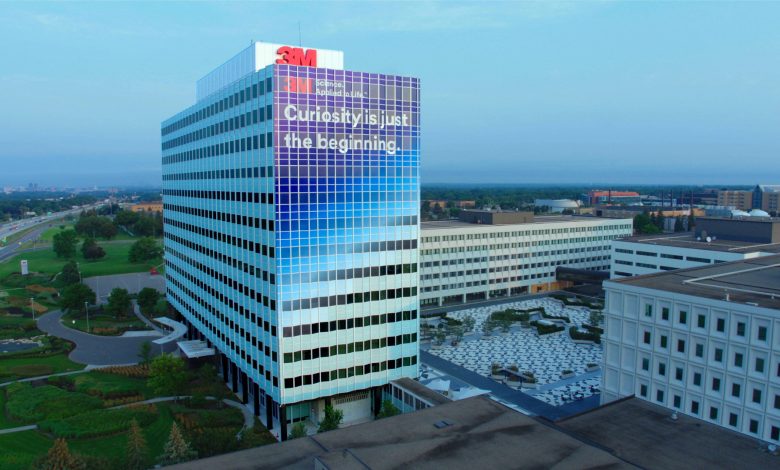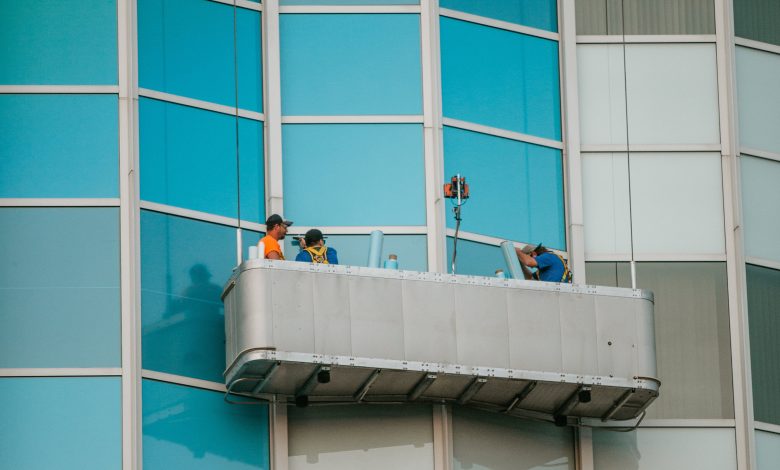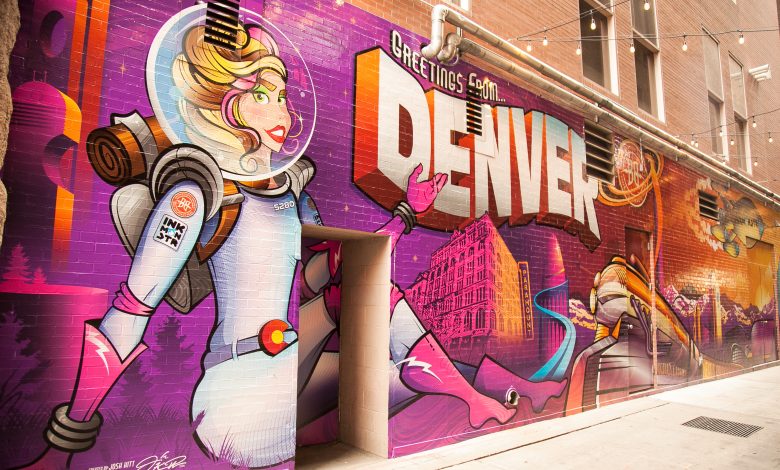Building wraps are a huge undertaking for any sign shop. While good planning and organization is helpful for any type of signage project, the sheer size of building wraps makes this even more important. Sign shops need to go into a building wrap with the right information and make sure they take the time to ensure each element is taken care of before installation day. Although this requires a little more time during the planning process and thinking two steps ahead, sign shops that take this initiative will set themselves up for success.
Setting Expectations
Of course, if your client goes into a building wrap project with unrealistic expectations, they likely won’t be happy with the results. Even if your work is up to par given the conditions surrounding the project, your client may not recognize the quality, which reflects poorly on your business.
To make sure clients are well-aware of the limitations as well as possibilities, Reed Silberman, founder and CEO of Ink Monstr, a Denver-based design and print shop, stresses the importance of asking a wide variety of questions during the sales process. Silberman starts by finding out what type of surface the building is and then what direction the installation area faces. Both questions allow Silberman to determine the realistic longevity of the graphic, he says. And Silberman doesn’t stop there.
“I always find out what’s the purpose of the wrap,” Silberman says. “Is it advertising or artistic? What’s the message you’re trying to get across, how often will you be changing your message, and what are you looking to accomplish? I like to say that the questions are our roadmap to clear expectations, and the more questions we ask, the more realistic we can be with expectations.”
Paul Peterson, operations director of The Vomela Companies, a specialty graphics provider based in St. Paul, Minnesota, also ensures that the client understands how the vinyl will look once installed, especially if using more than one substrate, he says. For instance, the colors on a perforated vinyl look different from an opaque vinyl, so Peterson makes this clear to avoid any unwanted surprises.
Additionally, Peterson makes sure to account for any potential delays when estimating the lead time, he says. When dealing with outdoor applications, conditions beyond your control, such as rain, snow or heavy wind, could delay your installation. However, if you build in some additional time, you don’t have to worry about not meeting your client’s expectations and missing any important installation deadlines.
Managing the Production Process
Once your shop wins the job and is ready to move into production, there are a few steps you can take to ensure the process continues to move smoothly. To start, Peterson holds preproduction meetings with his team to make sure everyone understands the scope of the project, he says. Effectively communicating to your internal team may seem like an obvious necessity, but many shops fail to do so, which can slow down the process and create more opportunities for mistakes. A quick team meeting goes a long way in making sure everyone clearly understands the project’s requirements, and it gives the team the chance to bring up any potential issues, such as capacity.
“We review which materials and presses we’re considering to get further insight from our production experts,” Peterson says. “If enough capacity isn’t available here based on the project’s timeline, we source the project to one of our network partners anywhere in the U.S. to provide additional capacity.”
At this point, Silberman determines whether he’ll use 54-inch or 60-inch wide media, which is typical for building wraps, as well as the appropriate overlap. For most interior walls, Silberman accounts for a 1-inch overlap from panel to panel, but for building wraps, he accounts for 3 inches.
“A 3-inch overlap gives you more durability and flexibility in the alignment of panels for those situations where your panels are stretching from the heat and sun,” Silberman says. “This way, you have more leeway to make sure your panels are aligned properly.”
Prior to installation, Matt Kading, a sales representative at 3M, a vinyl manufacturer based in St. Paul, says you should lay out every panel in the order that it will be placed on the building.
“You want to organize your panels so that it’s almost like taking one tissue from the box, and the next one is ready to go,” Kading says. “As long as that project management is done perfectly, the project can go smoothly. If you don’t have that, it can become cumbersome and makes for a lot of work on the fly.”
Recently, the Vomela team installed a large building wrap on 3M’s corporate headquarters. The building wrap consisted of nearly 500 individual pieces of film on each side of the building, and the pieces fit together like a mosaic. With so many pieces, Kading and Peterson agree that staying organized was essential.
“Keeping the panels clearly identified as to where they belonged in the finished mural was the key to success of the project,” Peterson says. “Without having that identifier on the panels, one could easily get misplaced, and the incorrect panel could be installed, especially in this scenario because we were installing panels 24 hours a day, and those dark nighttime hours made it more difficult to see.”
In addition to helping the installation process go smoother, Silberman says ordering the panels adds a layer of safety to the installers.
“You don’t want to be fumbling with media when you’re 80 feet in the air,” Silberman says. “We want everything to go as smoothly and accurately as possible, so you want to be very detail oriented. You need to be clear about how the wrap will be installed, so when the installers are up there on the lift, they know exactly what to expect.”
Navigating Installation Day
Although staying organized helps ensure installation day goes smoothly, weather often poses unplanned obstacles. In those cases, Silberman recommends you slow down and assess the job’s unique situation.
“The installation conditions really depend on your application,” Silberman says. “Whether the building faces south or north, west or east can affect the installation. What time of day you’re installing, the temp temperature and wind are also factors.”
For instance, if you know you’re installing a building wrap on a south-facing wall on a sunny day, plan to get to the site early in the morning if possible, Silberman says. When the weather heats up, the sun will stretch the vinyl, so you’ll need to slow down to keep the panel registration accurate.
Likewise, on cold days, be aware that installation will simply take longer, Silberman says. Cold weather increases the chance for failure, so make sure you go into the installation with the appropriate tools to heat the vinyl. To counter the cold weather, Silberman typically takes heat guns or a weed burner for an especially large project. Some people like to use blow torches to heat the vinyl. However, if wind accompanies that cold weather, it could blow out the torch.
Taking on a building wrap may seem intimidating, especially if you don’t typically handle such large projects. But if you take the time to carefully plan the logistics and stay organized, you’ll be in a good position to execute a successful building wrap.









